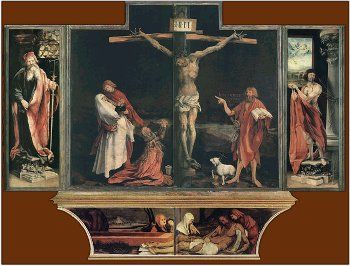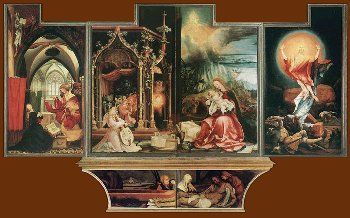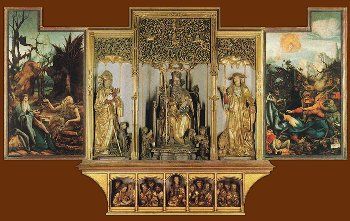
Matthias Grünewald painted between 1510 and 1515 an imposant altar piece
on request of the monastic order of Antonieten in Isenheim in Alsace near Colmar city. Nowadays the piece is exhibited in a museum in Colmar. Woodcarving was made by Niklas Hagenauer.
The panel in the midst is measured 269 at 307 cm. The two side panels are each high 232 cm and wide 75 cm. The platform/step is high 76 cm and wide 340 cm. The altar has two couple of panels, through which in full 3 panels can be faced. On the left panel the holy Sebastian (the marter), on the right panel the holy Antonius (the hermit). The platform/step shows the Entombment of Christ. The left part of the mid shows a fine composition. Utmost on the left side, in white, Maria, upholded by John the Evangelist. Maria Magdalene is kneeling. On the right is John the Baptist, who seems to pronounce the text: Illum oportet crescere, me autem minui. He must become greater and I more insignificant (Joh. 3:30), a text by which the ever modest Bapist a long time before the death of Jesus did indicate about the relations. Striking the crucifixion is the crippled body of Jesus, that is represented much more horrible than usual in those days. The blood of the lamb is catched in a cup. |

